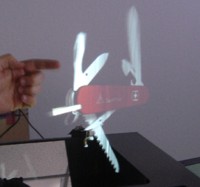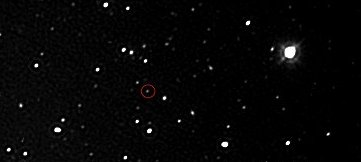Fuel cells have been used for decades to provide power for astronauts riding aloft in the nation's space capsules. But here on Earth, use of the cells has barely gotten off the ground in cars and power generation. Although the technology for fuel cells has existed since the late 1830s, the costs of producing the units and the drawbacks of making the fuel they use — hydrogen — has restricted their acceptance as sources of power for cars, trucks, hospitals, hotels, commercial building and even laptop computers, cell phones and hand-held computers. The Edison Materials Technology Center, a state-backed organization that funds Ohio research for new materials and manufacturing processes, is trying to help remedy that by underwriting research to develop materials to make fuel cells more useful and cheaper, and to make it safer and more practical to produce and store the hydrogen needed as fuel.
Fuel cells electrochemically combine hydrogen and oxygen without burning, giving off heat and water vapor rather than the noxious fumes of gasoline-burning engines. With no moving parts, fuel cells operate similarly to batteries and can even be used to keep batteries operating longer by providing them with supplemental energy.
The National Aeronautics and Space Administration has used fuel cells for on-board power during the Gemini and Apollo missions and on the space shuttles, said Jack Brouwer, associate director of the National Fuel Cell Research Center based at the University of California, Irvine. Brouwer said that military interest in fuel cells, which could be used on unmanned aerial surveillance craft or to power battlefield communications or weapon guidance systems, could help spur development for civilian uses, much as military development of jets benefited civilian aviation.
"We're making steady progress. But it just hasn't been pushed by this strategic drive or tactical drive," said Brouwer, whose agency promotes fuel cell technology.
Edison Materials Technology Center officials say they expect to see fuel cells begin appearing more commonly in the next few years to power laptops and cell phones, because they provide quiet and efficient energy.
EMTEC gets funding from state, federal and private sources and doles out grants typically in the range of $75,000 to $150,000 annually to companies that often work with universities and laboratories. The Kettering-based center has invested about $3.7 million since 1995 as seed money to attract other grants totaling at least $10 million to support fuel cell research that could create products for the market, its officials said.
A Columbus company, NexTech Materials Inc., has received nearly $1 million in continuing EMTEC research support. A grant announced in April for $674,875 is intended to help a Toledo researcher, Midwest Optoelectronics, work with the University of Toledo and others on a process to make a photovoltaic panel that produces hydrogen from water, using sunlight.
EMTEC is sponsoring conference in Dayton in August to meet with organizations interested in a new round of grants.
There is plenty of room for progress. Only in recent years have automakers including Honda, Toyota, General Motors, Ford, Daimler Chrysler, Nissan and BMW rolled out prototype, fuel cell-powered cars that cost as much as $1 million apiece to build. Auto manufacturers are still deciding which fuel cell technology would work best, or how to store hydrogen on board. Internal combustion engines are still far cheaper to produce than fuel cells to power cars, Brouwer said.
The hydrogen needed for fuel cells is typically produced from gasoline, natural gas, propane or coal, which leaves a waste by-product of carbon dioxide, the "greenhouse gas" that contributes to global warming.
The Columbus suburb of Westerville, helped by an $800,000 state grant, kicked in an additional $400,000 for a permanent fuel cell plant started up last fall to generate electricity. It was a first for Westerville, which previously purchased all its power on the open market. The fuel cell plant still generates only about 1 percent of the power needed for the city of 37,000 people, but has pleased residents who want Westerville to use alternative energy sources, city spokesman Scott McAfee said.
The Bush administration has more than doubled fuel cell research funding, from $124 million five years ago to the $269.7 million budgeted for the current fiscal year, Energy Department spokesman Tom Welch said. The intent is to help start new research, rather than investigate technology already known to industry, Welch said.
Sierra Club spokesman Dan Becker said that his organization would rather see the government promote energy efficiency in the short term by pressuring the auto industry to further develop demonstrated technologies such as hybrid cars or advanced transmissions. Plenty of fossil fuels will be consumed while researchers spend years trying to adapt fuel cells for widespread use, Becker said.
"Clearly, fuel cells work. You get electricity and drinkable water out the other end. That's great," Becker said. "But the devil is in the details about how you ramp up to produce on a large scale."
EMTEC officials said they are focusing on technologies for which the basic research has already been done and which could result in products for the market in six years or less, leaving the Department of Energy to underwrite the startup research. EMTEC officials envision fuel cells being used as backup power sources for hospitals or computer data storage operations, to supplement power generating plants and to power accessories like air conditioning, radios or commercial-grade refrigeration in passenger cars or long-haul trucks. That could allow truck operators to shut down diesel-powered rigs rather than leaving them idling for long periods.
International Truck and Engine Corp., which builds long-haul trucks in Canada and medium-duty trucks in Springfield, is waiting to see whether fuel cells will prove affordable enough for use as on-board power, company spokesman Roy Wiley said.
"It just hasn't come to fruition yet," Wiley said. "Cutting down the idling time would be a tremendous asset, because that burns a lot of fuel."

